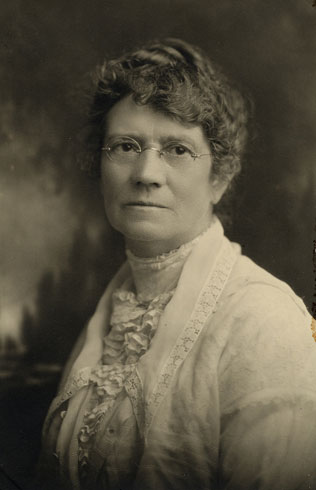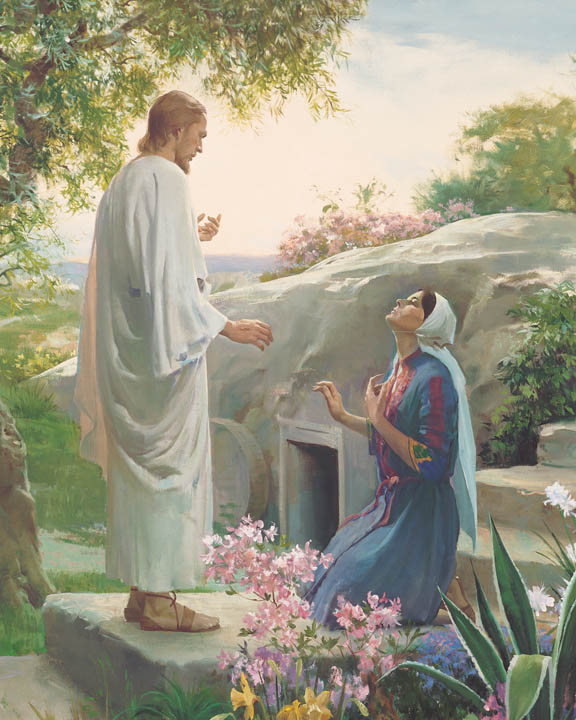By Rebecca
Ruth May Fox was a leader of young Mormon women for The Church of Jesus Christ of Latter-day Saints (inadvertently called the “Mormon Church” by some). Ruth was called as the second counselor of the first presidency of the Young Ladies’ Mutual Improvement Association (YLMIA), which is presently called the LDS Young Women’s organization (a divine organization led by a prophet of God who directs Mormon women to lead the female youth worldwide) (Caroline H. Benzley, “134 Years Young!”, New Era, November, 2003). Mormon youth attending the Young Women’s organization continue to grow strong testimonies of the Lord Jesus Christ. Weekly worship services occur on Sundays and youth can participate in community service projects and activities. As young women develop important characteristics (such as the young women values faith, good works, integrity, and virtue) they will become the future mothers and citizens our countries need.
Mormon Women Leaders:
 Ruth served with various Mormon women such as the LDS woman leader Martha H. Tingey (the young women’s president from 1905-1929) and first counselors Mae Taylor Nystrom (1905-1923), and Lucy Grant Cannon (1923-1929). In 1929, Martha requested an honorable release due to poor health, and Ruth became the new YLMIA president with Lucy Grant Cannon as her first counselor, and Clarissa A. Beesley as her second counselor (Andrew Jenson, Latter-Day Saint Biographical Encyclopedia, [1936], page 75).
Ruth served with various Mormon women such as the LDS woman leader Martha H. Tingey (the young women’s president from 1905-1929) and first counselors Mae Taylor Nystrom (1905-1923), and Lucy Grant Cannon (1923-1929). In 1929, Martha requested an honorable release due to poor health, and Ruth became the new YLMIA president with Lucy Grant Cannon as her first counselor, and Clarissa A. Beesley as her second counselor (Andrew Jenson, Latter-Day Saint Biographical Encyclopedia, [1936], page 75).
During her presidency from 1929-1937, she accomplished a lot and blessed the lives of many Mormon women. She wrote the song “Carry On” for the Church’s centennial in 1930, which was sung by youth during a June conference. During her presidency, she replaced slogans with scriptural themes, converted the Lion House into a “social center for girls,” and held the first YLMIA dance festival (“Presidents of the Young Women Organization Through the Years,” Ensign, June 2008, pages 40–45).
She was a strong Christian woman, although her extended family was “unsympathetic towards Latter-day Saints. Ruth’s father highly encourage[d] her to join the Church at a young age, and her faith remain[ed] strong throughout her entire lifetime… Her poetry is used as an expression of the goodness in life and her deep faith in the Lord Jesus Christ” (Mormon Channel, “Poets of the Restoration”, Ruth May Fox- Episode 4). She said:
Ever since I could understand, the gospel has meant everything to me. . . . It has been my very breath, my mantle of protection against temptation, my consolation in sorrow, my joy and glory throughout all my days, and my hope of eternal life. “The kingdom of God or nothing” has been my motto (“Presidents of the Young Women Organization Through the Years,” Ensign, June 2008, pages 40–45).
Mormon Women: Biography of Ruth May Fox
Ruth was born on November 16, 1853, in England to Mary Ann Harding and James May. When she was 17 months old, her mother died in childbirth and Ruth lived with various relatives and Mormon families. In 1865, her father traveled to America before sending for Ruth and Mrs. Saxon (his second wife). They arrived in Utah in 1867, when she was 13 years old, and she recorded:
At last the long journey was ended. We had pulled up the hill out of Parley’s Canyon just as twilight had shrouded the valley. We could still catch a glimpse of the city below, but I confess to some disappointment as I asked, “did we come all this way for that?” This, however, was my first and last disappointment (Mormon Channel: Ruth May Fox-Episode 48).
This initial reaction to a first view of the Salt Lake Valley was common. The valley was blessed by being surrounded by timbered mountains, with rivers carrying melting snow to the valley, just awaiting irrigation systems to make the valley fertile. But the region is semi-arid, and trees only grew along the rivers at the time. It must have looked very barren compared to the green of England.
 Ruth was a strong and hard worker throughout her life until her death on April 12, 1958, when she was 104 years old (Linda Thatcher, “Ruth May Fox, Forgotten Suffragist,” History Blazer, October, 1995). As a youth, she did housekeeping and factory work in Philadelphia to help finance the family’s journey to Utah, until they arrived safely in 1867. She worked in several Utah mills (Deseret Woolen Mill by Parley’s Canyon, the Ogden Woolen Mill, and her father’s mill in SLC):
Ruth was a strong and hard worker throughout her life until her death on April 12, 1958, when she was 104 years old (Linda Thatcher, “Ruth May Fox, Forgotten Suffragist,” History Blazer, October, 1995). As a youth, she did housekeeping and factory work in Philadelphia to help finance the family’s journey to Utah, until they arrived safely in 1867. She worked in several Utah mills (Deseret Woolen Mill by Parley’s Canyon, the Ogden Woolen Mill, and her father’s mill in SLC):
She operated equipment meant to be run by a man and developed strong feelings about equality–especially equal pay. Running the jack was a man’s job, she later wrote, noting, “I should have had a man’s wages for this, but Father thought that his partner would object since I was a girl….I was given only $10.00 a week; but that was very good for a girl at the time.” At age 19 she quit to marry 20-year-old Jesse W. Fox, Jr., on May 8, 1873 (Linda Thatcher, “Ruth May Fox, Forgotten Suffragist,” History Blazer, October, 1995).
Unfortunately, her husband lost his business after five years of financial success, and they eventually lost their home after accumulating financial debt. Linda Thatcher wrote: “Ruth responded by doing what needed to be done; she let domestic help go and eventually took in boarders” (“Ruth May Fox, Forgotten Suffragist,” History Blazer, October, 1995).
Illnesses and deaths in her family and financial losses and hardships caused Ruth to sum up her philosophy about adversity: “Life brings some hard lessons. The sturdiest plants are not grown under glass, and strength of character is not derived from the avoidance of problems” (JanetPeterson, “Carry On! Carry On!”, Ensign,August 2004).
Ruth was a talented writer, typist, and poet and used her talents to increase Mormon women’s political rights. She attended John Morgan’s College in Salt Lake City (SLC) for four months and worked as a typist for the YLMIA (Linda Thatcher, “Ruth May Fox, Forgotten Suffragist,” History Blazer, October, 1995).
Lacking formal education in her youth, she took college and correspondence courses as an adult… Fox’s literary efforts include numerous poems published in the Young Woman’s Journal and Improvement Era, song lyrics, and a book of poetry, May Blossoms (1923). Her most familiar work is the Latter-day Saint hymn “Carry On” (Mormon Literature & Creative Arts: Ruth May Fox, 2003).
Although Ruth wasn’t interested in politics, she participated in the historical suffrage movement and impacted the rights of Mormon women in Utah:
In Utah’s history there have been many important women of whom little has been written; one such person is Ruth May Fox. Besides raising 12 children, she was active in the Utah Woman’s Press Club (president), the Reaper’s Club, the Utah Woman Suffrage Association (treasurer), the Salt Lake County Republican Committee, the Second Precinct Ladies’ Republican Club (chair), the Deseret Agricultural and Manufacturing Society (board member), and the Traveler’s Aid Society (board member) (Linda Thatcher, “Ruth May Fox, Forgotten Suffragist,” History Blazer, October, 1995).
She worked hard for Utah women to get the right to vote and attended important 1895 suffrage meetings, interviewed Constitutional Convention delegates, traveled with Emmeline B. Wells to attend Republican meetings, and circulated petitions. She wrote of opponents such as Mr. Vanhorne who “did not think the constitution was the place for sufferage [sic] to come up” and B. H. Roberts whose “only argument was that he thought it would defer statehood.” She helped write “the suffrage memorial presented to the convention delegates… [of which she said,] ‘We all felt it a great day in the history of Utah’.” (See Linda Thatcher, “Ruth May Fox, Forgotten Suffragist,” History Blazer, October, 1995.)
About Keith L. Brown
Keith L. Brown is a convert to The Church of Jesus Christ of Latter-day Saints, having been born and raised Baptist. He was studying to be a Baptist minister at the time of his conversion to the LDS faith. He was baptized on 10 March 1998 in Reykjavik, Iceland while serving on active duty in the United States Navy in Keflavic, Iceland. He currently serves as the First Assistant to the High Priest Group for the Annapolis, Maryland Ward. He is a 30-year honorably retired United States Navy Veteran.

 Watch a video about the restoration of the gospel on lds.org
Watch a video about the restoration of the gospel on lds.org